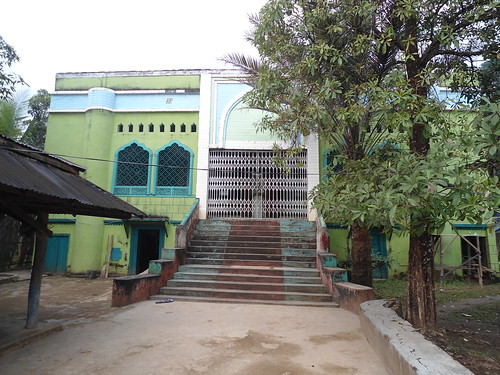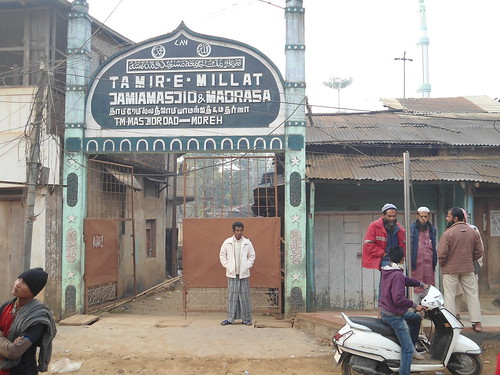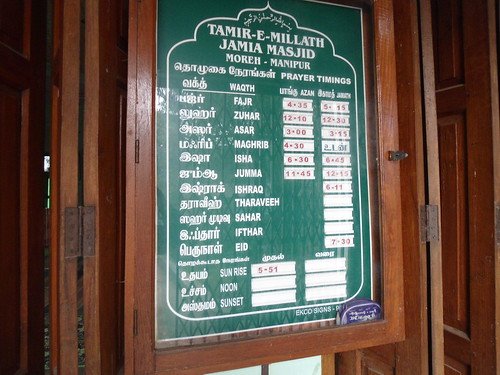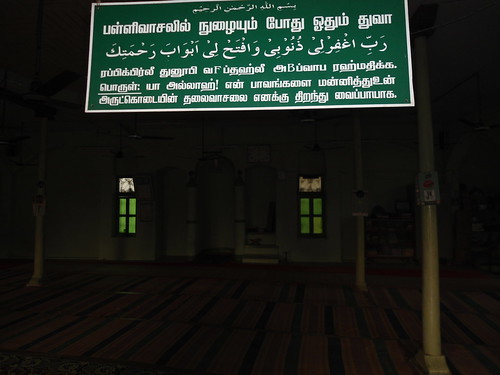By Dr. Syed Ahmed for TwoCircles.net,
Moreh: An inter-ministerial team of India visited Moreh, the Indian border town at the Indo-Myanmar border on 22 February 2012 to discuss about the proposed Imphal-Mandalay bus service between the two nations. Unfortunately the team returned empty handed after their Myanmarese counterpart did not turn up. However the Indian team conducted an inspection of the condition of roadways and bus parking facilities at Tamu town in Myanmar.
Moreh – the Gateway to South-East Asia
Moreh, 110-km south-east of Imphal, is a small town of Manipur bordering Myanmar. It is one of the most important trade routes between India and Myanmar. All sorts of Chinese electronic goods, furniture items, textile products, fruits, packed and unpacked food items, household items, even petrol and diesel, precious stones, etc. are imported to India from Myanmar through Moreh. Among other Indian goods, textiles and cycle parts which are in great demand in Myanmar and Thailand are imported. This route is also famous for trades in illicit drugs like heroin.

Madrasi masjid
In recent years, with the improvement of diplomatic relations between India and Myanmar, trade between the two countries has seen a rapid increase. Indian government is looking at Moreh as an important part of its relations with Myanmar and other South-East Asian countries. As per an estimate, in 2010-11 India’s export to Myanmar saw a growth of more than 60% against the overall export growth of 40.49%.
PM Dr. Manmohan Singh has also indicated that Moreh would be made a hub of cross-border trade with Myanmar. During the visit of President of Myanmar U Thein Sein to India last October, both the countries discussed the feasibility of cross-border road and rail networks. Manmohan Singh was reported to have discussed with the U Thein Sein the possibility of a road linking Moreh-Mae Sot that would connect India and Thailand via Myanmar.
As per a report, in October 2006 the Indian government had also proposed to build a railway-line from Jiribam to Imphal and Moreh. This railway line is part of the Mekong-Ganga Cooperation Initiative. According to the assessment of Rites Limited, construction of rail-link between Jiribam-Imphal-Moreh would cost of Rs 2,941.08 crore. Construction of rail link would also be required in Myanmar between Tamu-Kalay-Segyi at a cost of Rs 1,339.02 crore and rehabilitation of existing line from Segyi-Chaungu Myohaung at a cost of Rs 283.959 crore. So far, the Indian Railways has only begun work on the Jiribam Imphal line, expected to be completed by 2016.

Gate of Madrasi masjid
Unique demography of Moreh town
Moreh is also known for its unique demography. This small town is inhabited by numerous Manipuri and non-Manipuri communities. “Moreh town is just like mini India. Here we find different communities living together. We have many ethnic communities of Manipur – Kukis, Meities and Manipuri Muslims (locally known as Pangals). Besides these there are communities which have their origins from various parts of mainland India. We have the Marwaris, Nepalis, Sikhs, Gujaratis, Tamils and Keralites. We have also all the major religions – Christians, Hindus, Sikhs and Muslims all living peacefully for decades,” said Muhammad Hussain, President of Muslim Moreh Council.
Muslims of Moreh
Almost all the South Indians settled here at Moreh town had their origin from Tamil Nadu. So they are better known as Tamils. There are few households from Kerala. At present there are around 400 Tamil households. There are Hindu, Christian and Muslim Tamils. There are around 90 Tamil Muslim families.
P.N. Abdulla, a Tamil Muslim, is the Secretary of the Madrasi Masjid, said, “Our forefathers entered Burma to work during the British colonial rule. In course of time they settled there. In 1962 General Ne Win formed the government in Burma through a military coup. He ordered expulsion of Indians from the country in large scale. The military junta attacked the Indians who had been living in Burma for generations. This was followed by the nationalization of private ventures in 1964. The developments led to the emigration of numerous Indians from Burma. Indo-Burmese relations deteriorated. The Indian government arranged ferries and aircraft and lifted Indians out of Burma. Many of the Tamils from Burma who lived in refugee camps in Tamil Nadu re-entered Burma through Moreh. However, the Burmese authorities did not allow them to enter Burma. They then decided to settle down here at Moreh.”

Time-table for namaz at the masjid
Tamil population was earlier concentrated at Prem Nagar, which was the old Moreh town. However, the town was burnt down by fire in 1974. After the incident the Tamil population dispersed. Today Tamils are concentrated near the Gate No. 1, which leads to Myanmar. This Tamil village is called Dalpati. There are also Tamils at Madrasi colony and also near the Gate No. 2 which leads to Namphalong market on the Myanmar side where of the goods that comes from South-East Asian countries are sold. Few Tamil families are also seen near the Gate No. 4.
“Earlier there were more 10 thousand Tamils. However, over the years many have returned to Tamil Nadu. Many of the Tamils left for their home state after the Kuki-Tamil clash that occurred in 1995-96. The clash occurred after Kuki militants imposed taxes on Tamil businesses. 6 Tamils were killed in the clash,” informed P.N. Abdullah.
There is an old masjid built by the Tamils, called Tamir-e-Millat Jame Masjid, near the Gate no. 2. It is popularly known as Madrasi masjid. A madrasa is also attached to this masjid. A member of the masjid committee, Syed Bukhari said, “The land for this masjid was bought in 1967. In 1969 a masjid was built by wood. The present masjid building was completed in 1984. A Manipuri Muslim has been the imam of this masjid for the last 20 years. He even speaks Tamil. Interestingly all the Tamils here speak Manipuri as well as Burmese.”
The Manipuri Muslim population is concentrated in Muslim Nagar, which is near the Gate no. 3. The Nagar has around 400 Muslim households. There is a masjid. These Muslims also survive on business.

Interior of the masjid
Other communities
There is a temple of the Tamil Hindus called Sri Angala Parameshwari at Dalpati. There is also a Tamil Catholic church.
Tamil Sangam was formed in the early 60s to deal with the social issues of the Tamil community. At present the Sangam runs a Free School. Tamils also manage a school named Netaji Memorial English School at Dalpati. The Tamils do not take any financial assistance from the government or other communities to manage the schools. However, non-Tamils also study in these schools.
All the Tamils irrespective of their religions survive on trade and business. They engage in export-import of all sorts of items. There are many well-to-do Tamil businessmen. The Tamils of Moreh have close relations and business contacts with those Tamils in Burma. There are around 15 lakh Tamils in Myanmar.
Nepali population is concentrated in Nepali Basti. There is a Durga Mandir at this basti, which was built in 1952. There are few Sikh families along the Teli Road. Shri Guru Singh Gurudwara and Shri Hanuman Mandir are also near the Teli Road. Shri Parashvanath Digambar Jain Temple is near the Madrasi masjid.

